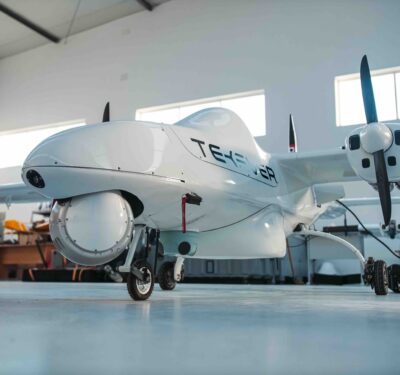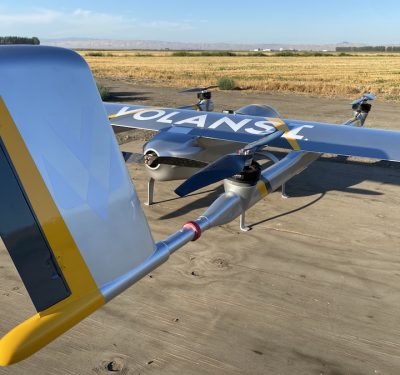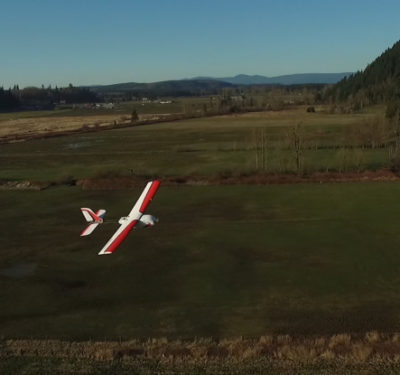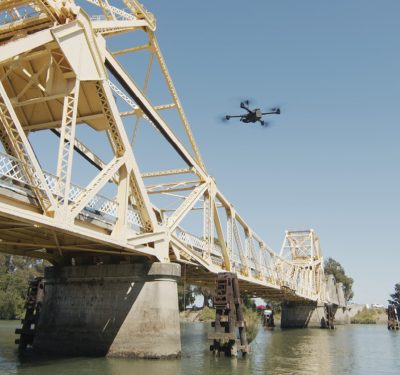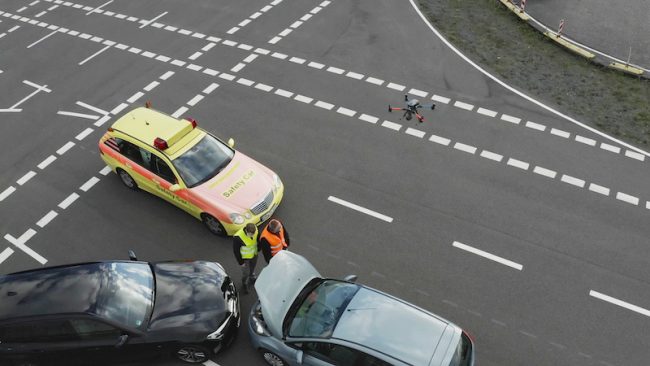
A first-responder drone linked to a 5G network arrives at an accident scene.
(credit: Vodafone Group)
European telecom giants Vodafone and Ericsson have successfully tested “safe sky corridors” for drones using intelligent aspects of a 5G mobile network, the companies announced. The exercise moves drone delivery of goods and critical services one step closer to commercial reality. As Vodafone Group’s Chief Technology Officer Johan Wibergh noted in a release, the combined technologies “can assess fires, deliver medical supplies, and help businesses survey hazardous conditions, such as construction sites, power lines and our own mobile masts, quicker and more safely.”
Like their American counterparts, European cellular providers are making huge investments in 5G infrastructure to capitalize on what they see as an imminent boom in disruptive drone applications. Cellular-connected drones form part of Vodafone’s multi-year effort to employ platforms that deliver new software, video and data applications at scale. The companies are an important duo in the European Union’s race to develop a continent-wide drone ecosystem. But before that can happen, engineers must ensure that cell phones don’t foul up cellular-connected drones, and that drones can seamlessly jump from one mobile network to another.
Conducted in November at Vodafone’s 5G Mobility Lab in Aldenhoven, Germany, the experiment used network traffic data to test connectivity across a route, including the ability to avoid areas of poor network coverage or heavily loaded cells. This test built on one the companies carried out in 2018, during which they worked to mitigate possible interference should the drone receive signals from multiple signal transmission sites.
For the current trial, Ericsson and Vodafone used information obtained via Vodafone’s “Network Exposure Layer, ” which makes network data easier to utilize while keeping it secure. The companies gathered intelligence from a 5G network to produce signal maps, which enabled the drone to continuously stay airborne in areas with good signal coverage. Anonymized mobile user information was collated so the drone could avoid heavily crowded areas on the ground below.
Vodafone said it can provide this key information to trusted third parties via Application Programming Interfaces (APIs) so operators can quickly and easily plot pre-determined drone paths for BVLOS flights. The hope is that this eventually could be done at mass scale with SIM cards in drones serving a similar function to aircraft transponders.
“APIs will speed up the adoption of drones for commercial and public sector use, bringing many benefits,” Vodaphone’s Wibergh added.
As part of the new trial, Vodafone and Ericsson also explored ways to use the network to control key features of the drone, such as being able to instantly improve video definition without impacting other services. This is particularly useful in situations where live video is not required for the entire mission.
“Drones are immensely powerful tools for many businesses,” added Erik Ekudden, Ericsson’s chief technology officer. “We are still only scratching the surface of the possibilities they will open up.”


